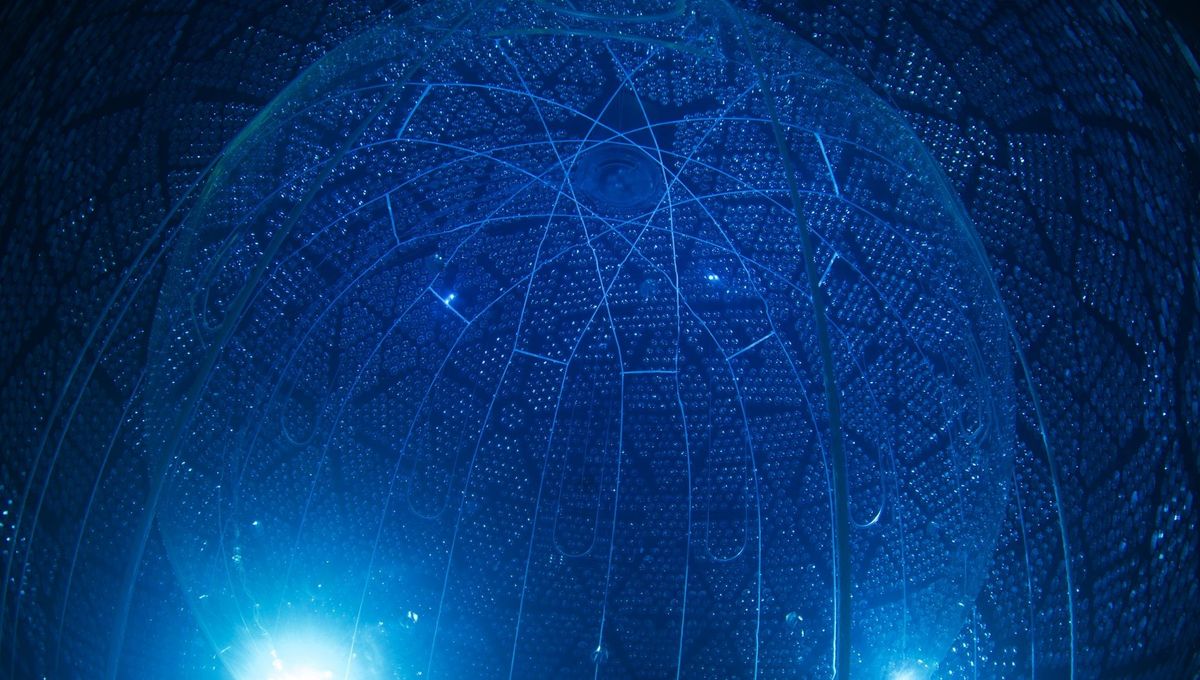
The Sudbury Neutrino Observatory Plus (SNO+) is a neutrino detector located deep within Creighton Mine in Sudbury, Ontario. At 2,100 meters (6,890 feet) below ground, it is shielded from most cosmic particles coming from above. But not all. And those that can get there are its target: neutrinos.
Neutrinos are elementary particles with very little mass and no electric charge, which allows them to pass through solid matter with no trouble at all. Every second, trillions of neutrinos are going through each square centimeter of your body and you’re none the wiser. But with some substances, you can get some rare interaction between neutrinos and matter that releases light. And that light can be observed and the neutrino that caused it studied.
This is the goal of SNO+: studying neutrinos coming from the Sun, the Earth, and, for example, if a supernova were to go off in our galaxy, also from those events. But the ones recorded in the first 190 days of testing don’t come from any of these sources. They came from nuclear reactors. Specifically, the Bruce, Darlington, and Pickering nuclear reactors. Those are located 240 kilometers (150 miles) from the detector.
“It intrigues us that pure water can be used to measure antineutrinos from reactors and at such large distances,” SNO+ collaboration member Logan Lebanowski said in a statement. “We spent significant effort to extract a handful of signals from 190 days of data. The result is gratifying.”
Neutrinos and antineutrinos are both produced in nuclear reactions. Antineutrinos in particular are released when a neutron in some radioactive element turns into a proton and an electron. Water was not expected to be such a good detector of these neutrinos in such a relatively small detector (only five-stories tall).
Experiments in oceans, lakes, and ice tend to compensate for the limitations of water by having a huge volume. But SNO+ shows that you can monitor nuclear reactors using neutrino detectors that don’t require toxic or dangerous liquid as scintillators, just ultra-pure water.
The liquid inside SNO+ is now been changed to a scintillator which is no longer water but a liquid similar to a mineral oil. This liquid is more likely to interact with neutrinos than water, so expect more results from this detector.
“This finding is a great indicator that we can expect very exciting physics from the scintillator phase, running now for nearly 10 months, well into the future,” said SNOLAB research scientist Christine Kraus.
The study is published in Physical Review Letters.
Source Link: Antineutrinos From Nuclear Reactor Spotted In Deep Mine Detector 240 Kilometers Away